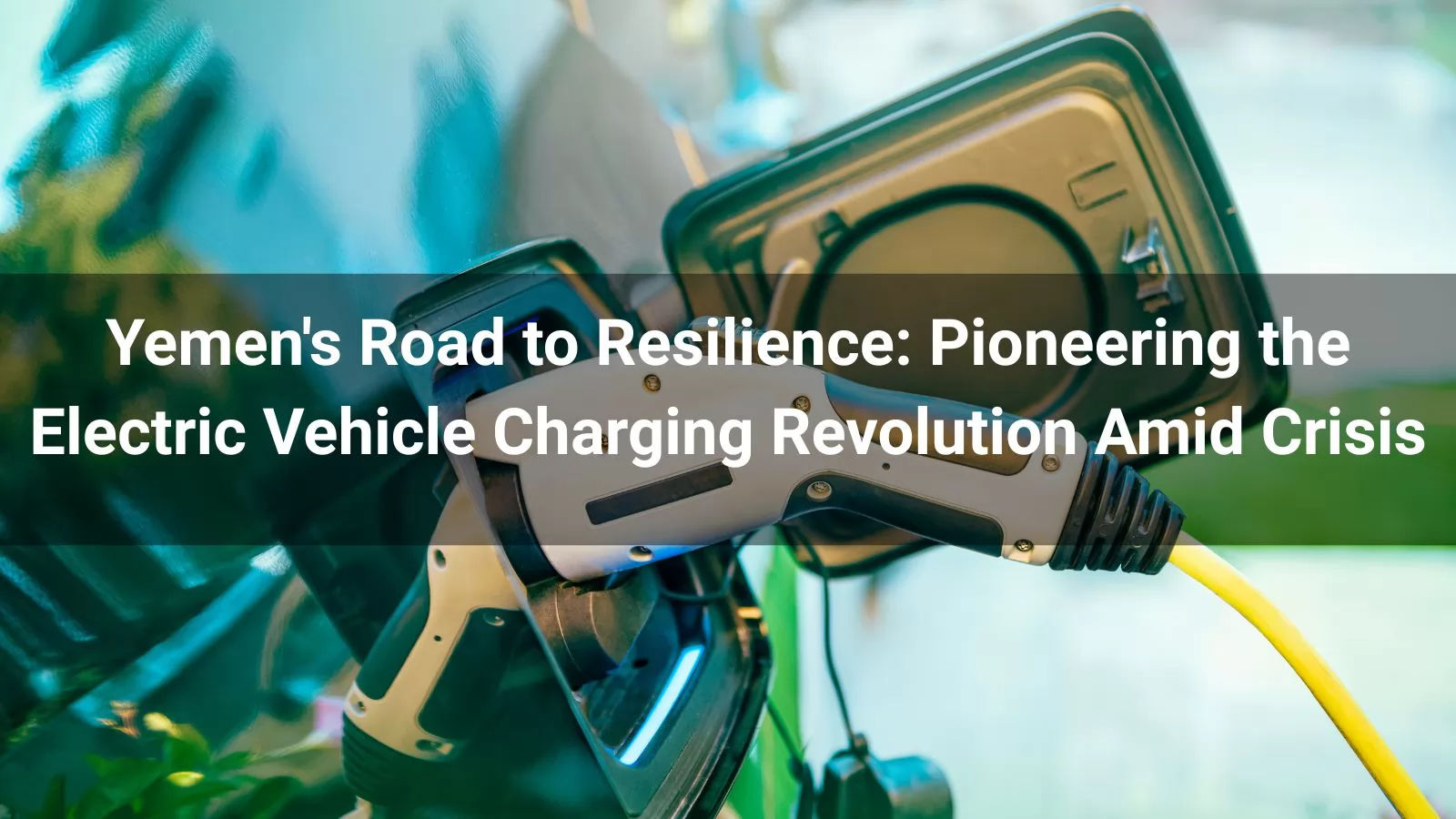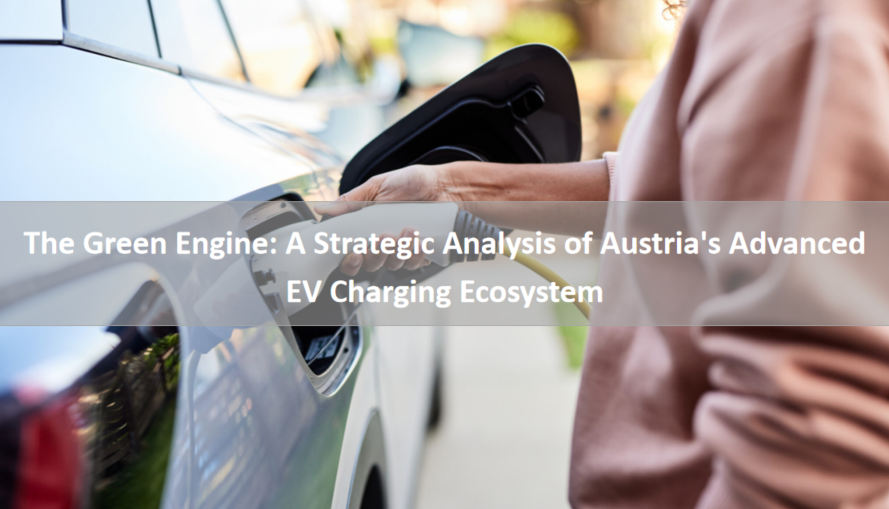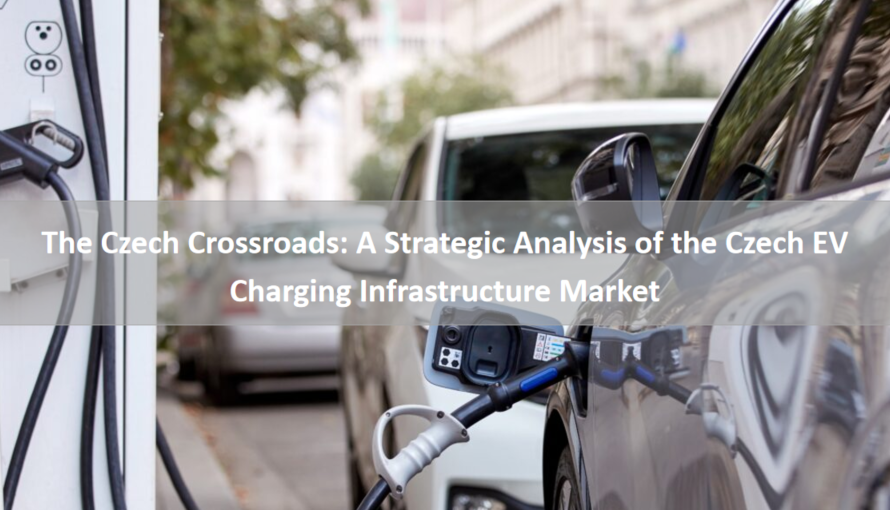
Yemen’s transition to electric vehicle (EV) charging infrastructure is at an embryonic stage, constrained by ongoing conflict, economic instability, and underdeveloped energy infrastructure. This report analyzes the national policies, market size, development status, opportunities, and challenges of EV charging stations in Yemen within a rigorous framework. National policies are limited, with no specific EV-focused legislation, though renewable energy initiatives provide a foundation for future development. The EV market in Yemen is negligible, with fewer than 100 EVs estimated to be in use as of 2025, reflecting minimal demand for charging infrastructure. Development status is nascent, with no public charging stations and reliance on private, ad hoc solutions. Opportunities exist in leveraging renewable energy, international aid, and Yemen’s strategic geographic position, but significant challenges, including political instability, grid limitations, and economic constraints, hinder progress. Strategic recommendations focus on pilot projects, public-private partnerships, and aligning with global sustainability trends to foster a viable EV ecosystem.
1. National Policies
Yemen’s national policies for EV charging infrastructure are virtually nonexistent due to the country’s ongoing conflict and economic challenges. However, broader energy policies, particularly those promoting renewable energy, offer a potential foundation for future EV infrastructure development.
Yemen’s policy landscape is shaped by its protracted civil conflict, economic crisis, and reliance on international aid, which limit the government’s capacity to prioritize EV infrastructure. Key points include:
-
Absence of EV-Specific Policies:
-
As of 2025, Yemen has no dedicated policies or regulations targeting EVs or charging infrastructure. The Ministry of Electricity and Energy, severely impacted by the conflict, focuses primarily on restoring basic electricity access rather than advancing sustainable transport solutions.
-
Unlike regional peers like Oman, which has implemented tax exemptions and infrastructure mandates, Yemen’s government lacks the fiscal and administrative capacity to introduce similar measures. This gap reflects the prioritization of immediate humanitarian needs over long-term sustainability goals.
-
Renewable Energy Initiatives as a Proxy:
-
The Yemen Renewable Energy Strategy (2018), supported by international organizations like the World Bank, aims to increase renewable energy capacity, particularly solar, to address chronic power shortages. Projects like the 60 MW solar power plant in Al-Hudaydah, funded by the United Arab Emirates, indicate a shift toward clean energy that could support EV charging in the future.
-
These initiatives align with global trends, such as the International Energy Agency’s (IEA) emphasis on integrating renewable energy with EV infrastructure. However, their implementation is slow due to security concerns and funding constraints.
-
International Aid and Policy Frameworks:
-
International organizations, including the United Nations Development Programme (UNDP), have supported small-scale renewable energy projects in Yemen, such as solar microgrids for rural communities. These could serve as a foundation for localized EV charging networks, particularly for light-duty vehicles or electric three-wheelers.
-
The absence of a national EV strategy contrasts with countries like Chile, which has implemented a National Electromobility Strategy with tax incentives and infrastructure programs. Yemen’s reliance on external aid limits its ability to develop a cohesive policy framework independently.
-
Regulatory and Institutional Barriers:
-
Yemen’s regulatory environment is fragmented, with overlapping authorities and limited enforcement capacity. The lack of technical standards for EV chargers, such as those aligned with global protocols like ISO 15118, hinders potential private-sector investment.
-
The government’s limited control over territory further complicates policy implementation, as competing factions may prioritize different energy and transport priorities.
2. Market Size
Yemen’s EV market is negligible, with an estimated fewer than 100 EVs in operation as of 2025, resulting in minimal demand for charging infrastructure. The market is constrained by economic hardship and infrastructure limitations, but growth potential exists as global EV adoption trends influence the region.
-
Current EV Market Size:
-
Yemen’s EV market is virtually nonexistent, with no reliable data on EV sales or stock. Estimates based on regional trends suggest fewer than 100 EVs, primarily imported by affluent individuals or organizations for niche applications, such as humanitarian operations.
-
This contrasts sharply with global projections, where the EV charging station market is expected to grow from USD 30.63 billion in 2025 to USD 257.33 billion by 2032 at a CAGR of 35.5%. Yemen’s economic constraints and lack of infrastructure preclude similar growth in the near term.
-
Demand for Charging Infrastructure:
-
With negligible EV adoption, demand for public charging stations is minimal. Any existing charging is likely private, using ad hoc solutions like solar-powered home chargers, reflecting the absence of a public network.
-
Globally, the IEA notes an average of 10 EVs per public charger in mature markets. In Yemen, the lack of both EVs and chargers renders this metric irrelevant, but it underscores the scale of infrastructure needed for future growth.
-
Regional and Global Context:
-
Neighboring countries like Oman project an EV market growth from USD 0.28 billion in 2025 to USD 1.05 billion by 2030. Yemen’s market is unlikely to approach this scale due to economic and political barriers, but regional trends may drive limited adoption, particularly for commercial vehicles like electric three-wheelers.
-
The global rise in EV sales, reaching 14 million in 2023 with a projected 17 million in 2025, highlights the disparity between Yemen’s market and global trends. External investment could bridge this gap, but only with significant stabilization.
3. Development Status
Yemen’s EV charging infrastructure is nonexistent, with no public charging stations and reliance on private, improvised solutions. The country’s energy infrastructure limitations and ongoing conflict severely constrain development, though small-scale renewable energy projects offer a starting point.
-
Current Infrastructure Landscape:
-
As of 2025, Yemen has no public EV charging stations, reflecting the country’s minimal EV adoption and broader electricity challenges. The national grid, heavily damaged by conflict, supplies only 1.3 GW against a demand of 3 GW, with many areas relying on diesel generators or solar microgrids.
-
Private charging solutions, such as solar-powered home chargers, may exist in limited cases, particularly among humanitarian organizations or affluent households, but these are not scalable without significant investment.
-
Energy Infrastructure Constraints:
-
Yemen’s electricity sector is in crisis, with frequent blackouts and reliance on fossil fuel-based generators. The IEA highlights that EV charging infrastructure requires robust grid capacity, which Yemen lacks, making large-scale deployment unfeasible in the near term.
-
Small-scale solar projects, such as those supported by the UNDP, provide power to rural communities but are insufficient for widespread EV charging. These projects could, however, support pilot charging stations in stable areas.
-
Comparative Regional Development:
-
Unlike Oman, which has 12 public charging stations and public-private partnerships, Yemen’s infrastructure development is stalled by conflict and economic instability. Regional peers like the UAE, with advanced EV ecosystems, highlight the gap Yemen must bridge.
-
The lack of charging infrastructure exacerbates range anxiety, a global barrier to EV adoption noted by the IEA, which is particularly acute in Yemen due to the absence of any public network.
-
Potential for Pilot Projects:
-
International organizations, such as the World Bank, have funded solar microgrids in Yemen, which could serve as testbeds for EV charging pilot projects. For example, a microgrid-powered charging station in Sana’a or Aden could demonstrate feasibility and attract further investment.
-
Such projects would need to align with global standards, such as the Open Charge Point Protocol (OCPP), to ensure scalability and interoperability, as seen in mature markets like the Netherlands.
4. Opportunities
Despite its challenges, Yemen’s EV charging infrastructure market presents opportunities through renewable energy integration, international aid, and its strategic geographic position. Targeted pilot projects and public-private partnerships could lay the foundation for future growth.
-
Renewable Energy Integration:
-
Yemen’s abundant solar potential, with an average of 6.5 kWh/m²/day of solar irradiation, offers a significant opportunity to power EV charging stations with renewable energy. Solar microgrids, as demonstrated by UNDP projects, could support localized charging networks, reducing reliance on the unstable national grid.
-
Global trends, such as China’s integration of solar-powered charging stations with battery storage, provide a model for Yemen to emulate, particularly for small-scale applications in urban centers like Aden.
-
International Aid and Partnerships:
-
International organizations, including the World Bank and UNDP, are already investing in Yemen’s renewable energy sector. These entities could expand their focus to include EV charging pilot projects, leveraging funds to address both energy access and sustainable transport.
-
Public-private partnerships, similar to Oman’s EVO initiative, could attract companies like ABB or Tesla to pilot charging infrastructure, particularly if tied to humanitarian or economic development goals.
-
Strategic Geographic Position:
-
Yemen’s location along key maritime and trade routes, such as the Bab el-Mandeb Strait, positions it as a potential hub for regional logistics. Electric three-wheelers or light-duty EVs for commercial use could drive demand for charging infrastructure, especially in port cities like Aden.
-
The growing demand for electric commercial vehicles in the Middle East and Africa, noted in global market analyses, presents a niche opportunity for Yemen to develop targeted infrastructure.
-
Technological Innovation:
-
Smart charging technologies, such as IoT-enabled chargers, could optimize limited grid capacity in Yemen. The IEA notes that smart charging reduces grid stress, a critical consideration for Yemen’s fragile energy system.
-
Vehicle-to-grid (V2G) technology, commercially available in Europe, could enable charging stations to provide grid services, creating new revenue streams and enhancing economic viability.
5. Challenges
Yemen’s EV charging infrastructure faces formidable challenges, including political instability, a collapsed energy grid, economic constraints, and low consumer awareness. These barriers necessitate a phased, externally supported approach to development.
-
Political and Security Instability:
-
Yemen’s ongoing civil conflict, which has persisted since 2014, disrupts governance, infrastructure development, and investment. The lack of a unified government complicates policy formulation and implementation, as noted in studies on Latin American EV markets.
-
Security risks deter private-sector investment, unlike in stable markets like Chile, where clear regulatory frameworks support infrastructure growth.
-
Energy Infrastructure Limitations:
-
The national grid’s limited capacity (1.3 GW against a 3 GW demand) and frequent outages make large-scale EV charging unfeasible. The IEA highlights that uncoordinated charging can strain grids, a challenge magnified in Yemen’s context.
-
RelianceTQ on diesel generators and small-scale solar solutions limits scalability, as these systems are not designed for the high power demands of fast chargers.
-
Economic Constraints:
-
Yemen’s GDP per capita, estimated at USD 650 in 2025, and widespread poverty limit consumer ability to purchase EVs, reducing demand for charging infrastructure. High upfront costs for chargers, noted globally as a barrier, are particularly prohibitive in Yemen.
-
The lack of government liquidity, as seen in Latin American markets, restricts public investment in infrastructure, necessitating reliance on external aid.
-
Low Consumer Awareness and Range Anxiety:
-
Limited public awareness of EV benefits, coupled with the absence of charging infrastructure, exacerbates range anxiety. Global studies, such as those in Malaysia, highlight knowledge barriers as a significant hurdle, a challenge amplified in Yemen’s low-literacy context.
-
The lack of standardization, such as varying connector types (e.g., CCS, CHAdeMO), could further complicate future infrastructure deployment, as seen in global markets.
Strategic Recommendations
-
Launch Pilot Charging Projects:
-
Implement solar-powered charging stations in stable urban areas like Aden, supported by international aid. These pilots should align with global standards (e.g., OCPP) to ensure scalability.
-
Target commercial applications, such as electric three-wheelers, to drive initial demand and demonstrate feasibility.
-
Leverage International Aid:
-
Partner with organizations like the World Bank and UNDP to fund EV charging infrastructure as part of renewable energy projects. Tie these initiatives to broader humanitarian and economic development goals to secure funding.
-
Engage regional players like the UAE to replicate successful renewable energy models in Yemen’s context.
-
Develop a Regulatory Framework:
-
Establish a basic regulatory framework for EV charging, focusing on interoperability and safety standards. Draw on global protocols like ISO 15118 to attract private-sector interest.
-
Coordinate with international organizations to ensure alignment with regional and global trends.
-
Promote Consumer Awareness:
-
Launch targeted education campaigns, supported by NGOs, to highlight EV benefits and address range anxiety. Focus on commercial and humanitarian sectors to build initial adoption.
-
Use mobile applications to provide information on future charging station locations, enhancing consumer confidence.
-
Integrate Renewable Energy:
-
Co-locate charging stations with solar microgrids to reduce grid dependency. Explore battery storage solutions to manage peak demand, as seen in China’s BYD initiatives.
-
Leverage Yemen’s solar potential to create cost-effective, sustainable charging hubs.
Conclusion
Yemen’s EV charging infrastructure is at a nascent stage, constrained by political instability, a collapsed energy grid, and economic challenges. The absence of EV-specific policies and negligible market size reflect the country’s broader socio-economic issues, but renewable energy initiatives and international aid provide a foundation for progress. Opportunities lie in leveraging solar potential, strategic partnerships, and Yemen’s geographic position, while challenges like grid limitations and low consumer awareness require targeted interventions. By implementing pilot projects, securing external support, and aligning with global sustainability trends, Yemen can lay the groundwork for a future EV ecosystem, contributing to long-term economic and environmental resilience.
Read more:
10 Best DC Fast Chargers 2025
Top 10 EV Charging Companies in the World 2025
Top 10 DC EV Charger Companies in China 2025








